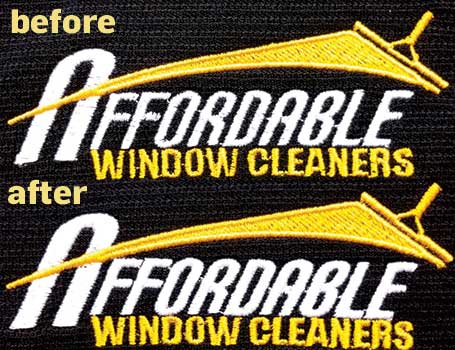Product Hub September 01, 2016
How to Use a Water-Soluble Topping the Right Way
A judicious use of water-soluble topping can help improve almost any embroidery design, helping to smooth things out and prevent threads from sinking into your fabric.

If you want to create high-quality embroidery, water-soluble topping is a necessity.
Even problematic designs may be elevated through strategic placement of the substance. In essence, topping helps keep your thread on top of the garment, rather than sinking into the fabric. Using a water-soluble topping on fabric with a raised or rough texture will make your embroidery look smoother and help to climb over those rough spots. This is especially important for knit fabrics such as piqué, terry cloth, fleece and heavy textured woven fabrics.
If you’re unconvinced, try this experiment: Embroider two samples, the same design on the same fabric, one using topping and one without. You’ll see a difference.
In general, one layer of topping is sufficient. However, if a design is badly digitized, you may need two layers. For designs with small text on top of fill stitches, the text can sink into the fill because of its rough texture. Laying down a piece of topping over the fill area before embroidering the text will solve this issue, giving a smooth edge on your text. You can eliminate the fill’s roughness by shortening stitch length, but if you’re not a digitizer, the topping trick will take care of it.
When you’re monogramming a white dress shirt, it’s almost inevitable that dirt or oil from the machine will get onto the shirt. Using topping, however, protects it, since the oil can’t penetrate the topping.
Topping can also be used as a backing when you’re embroidering on delicate, lightweight fabrics, like bridal handkerchiefs, where you can’t afford visible backing; I use two layers of topping as backing, and one layer on top. Other items where topping works as invisible backing are blankets, throws, shawls and scarfs. It’s good for lubricating needles when a fabric skips stitches.
Many embroiderers I train don’t use topping because it takes too long or leaves a mess when they remove it improperly. When you have a steamer and create a sticky ball of topping, it’s simple to dab off the excess topping. If you don’t use topping, start; it solves many problems in the embroidery process.
Joyce Jagger is owner of The Embroidery Coach, an industry consulting firm. Find more of her advice on her blog, www.theembroiderycoach.com.

Product Hub
Find the latest in quality products, must-know trends and fresh ideas for upcoming end-buyer campaigns.
